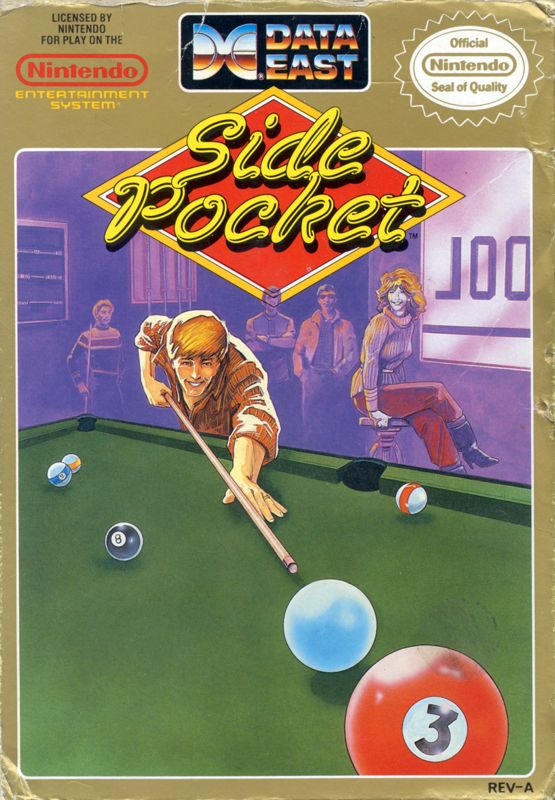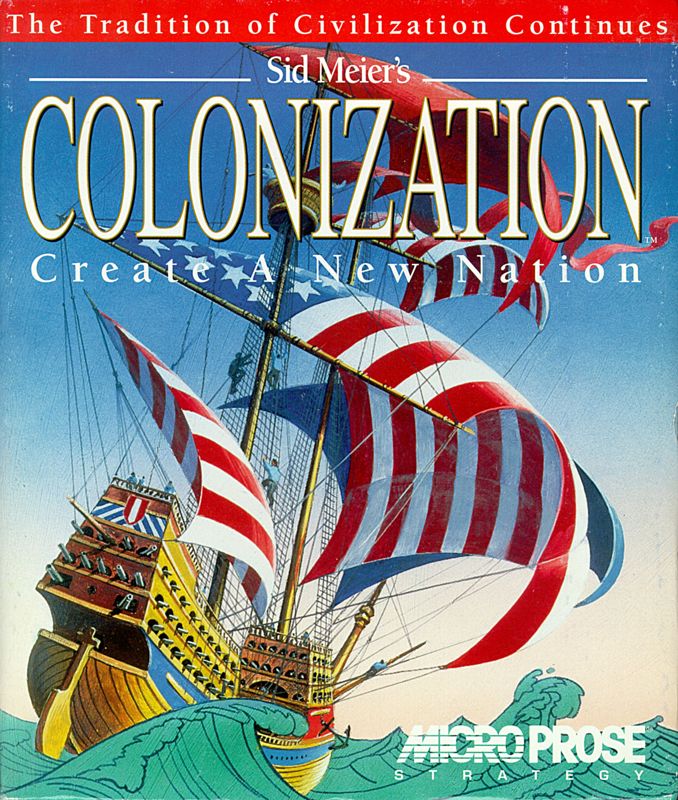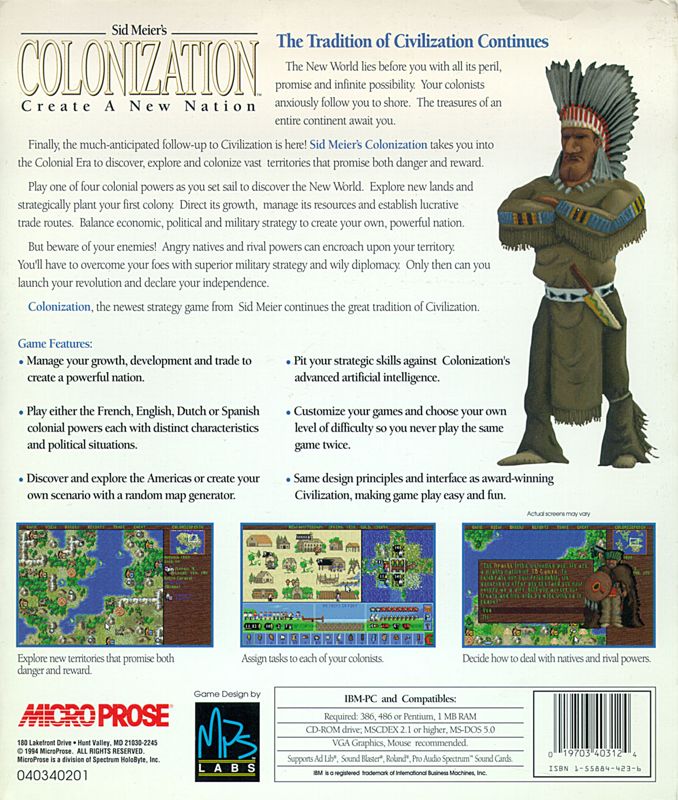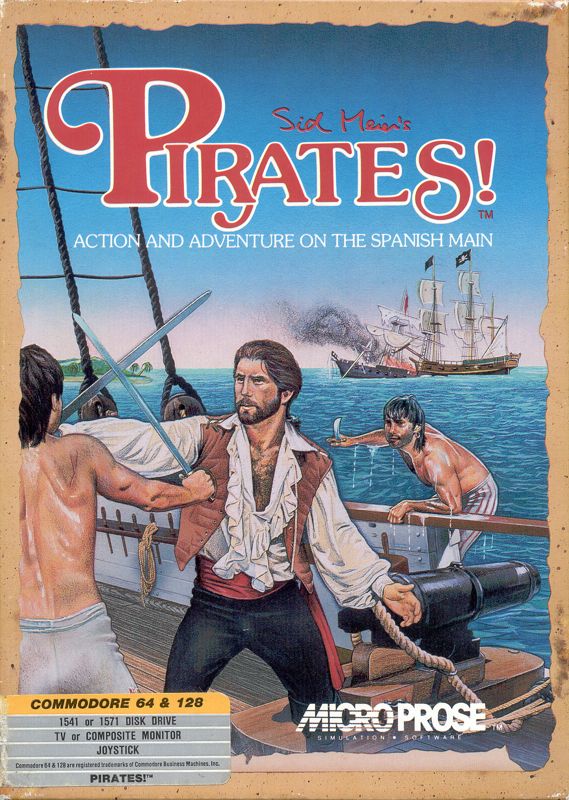Sid & Al Incredible Toons


Sid & Al's Incredible Toons is a spin-off of The Incredible Machine series. It features cartoon characters and items instead of pseudo-realistic contraptions, but the goal is the same: to build hilarious machines reminiscent of the pictures of Rube Goldberg.
Sid Mouse and Al E. Cat have probably never heard of Tom & Jerry, but they’re just as single-minded: any means to hurt the adversary is a good one. They get plenty of means in Incredible Toons. Around 100 puzzles need to be solved, each one a 2D machine of which crucial parts are missing. The player's task is to choose useful objects from a separate window, position them on the screen and start the machine to see if it’s working. A simple example: a piano hanging from a rope needs to be dropped on Al. To accomplish this, you place open scissors next to the cable and drop a ball on them - voila, the rope is cut, Al crushed. However, most puzzles are far more complicated; for example, the player might first have to lure Al under the piano with a fish, which needs to be transported to the right location by conveyor belts.
The puzzles involve a score of contraptions, ranging from simple ropes and pulleys to balloons, trapdoors, catapults, bombs, electrical hairdryers, and motors. Sid and Al are accompanied by several other cartoon characters, such as the lady elephant Eunice who will toss things around, or the pet dragon Bik that ignites objects with his fiery breath.
Gameplay is spiced up with cartoon animations -- Al chasing Sid is a sight to remember. If the player has solved all of the puzzles, the player can build own challenges with the comfortable editor. Oh, be sure to learn Sid & Al’s lessons well -- you never know when you need to get rid of a mouse with nothing but some cheese, a trapdoor and an anvil.
Sid Mouse and Al E. Cat have probably never heard of Tom & Jerry, but they’re just as single-minded: any means to hurt the adversary is a good one. They get plenty of means in Incredible Toons. Around 100 puzzles need to be solved, each one a 2D machine of which crucial parts are missing. The player's task is to choose useful objects from a separate window, position them on the screen and start the machine to see if it’s working. A simple example: a piano hanging from a rope needs to be dropped on Al. To accomplish this, you place open scissors next to the cable and drop a ball on them - voila, the rope is cut, Al crushed. However, most puzzles are far more complicated; for example, the player might first have to lure Al under the piano with a fish, which needs to be transported to the right location by conveyor belts.
The puzzles involve a score of contraptions, ranging from simple ropes and pulleys to balloons, trapdoors, catapults, bombs, electrical hairdryers, and motors. Sid and Al are accompanied by several other cartoon characters, such as the lady elephant Eunice who will toss things around, or the pet dragon Bik that ignites objects with his fiery breath.
Gameplay is spiced up with cartoon animations -- Al chasing Sid is a sight to remember. If the player has solved all of the puzzles, the player can build own challenges with the comfortable editor. Oh, be sure to learn Sid & Al’s lessons well -- you never know when you need to get rid of a mouse with nothing but some cheese, a trapdoor and an anvil.
Side Pocket


The main objective is to sink balls in each level and reach the predetermined scores to go ahead. But remember: you'll have only several "lives" and every error can be lethal. After each stage completed (and some luck), a bonus stage will appear, as well as the chance to earn extra balls. You will only need a good target in the parquet block!
Basic version differences:
Basic version differences:
- The original Arcade version is a pool game where the player competes against the timer trying to get all balls in pockets and earn points.
- The later NES release introduces modes for 2 players with two variants: 2P Pocket Game (the traditional mode) and 2P 9-Ball Game, where the premise is to sink 9 balls before the other player makes them first, training mode and single-player Pocket game. In 1P Pocket game the player needs to clear four levels with alternating ball layouts (i.e. reaching a predetermined number of points by sinking consecutive shots and sinking balls in numerical order), starting from City class and all the way to the World Class. Starting from State class, the player needs to perform a special trick after beating a level, and if they fail, the level restarts with a different ball layout.
- Game Boy version is a completely redrawn game featuring 1 or 2 players actions with two game modes: 9-ball and Pocket. The Pocket mode is generally similar to NES version.
- Genesis and SNES versions feature improved graphics and sound. Pocket game mode is reworked to include more stages and trick shot layouts. Also in this mode the player travels to different cities in the U.S.A. and claims championship there. New modes are Trick game and Jukebox. Game Gear version of Side Pocket is basically a toned-down Genesis version.
- Side Pocket for Wonder Swan features one and two-player play on a single device. In the single-player mode the player chooses an avatar from a menu and needs to beat the remaining opponents. The player and CPU then take turns in hitting the ball.
Sid Meier Civilization


Civilization has the widest scope of any strategy game of its time. You are a leader of a nation. You begin in the Stone Age, and complete the game in the XXIth century (unless your civilization gets destroyed earlier). Your eventual goal is to become the dominant civilization in the world, either by wiping out everybody else, or being the first to get a space ship to Alpha Centauri.
As the nation's leader, you have many responsibilities. You have to build cities, and then micromanage them, constructing various buildings. Most of people in your cities will be working on the neighbouring lands to get food (without it, your city won't survive or grow), production (used to build military units and buildings) and trade (which can be exchanged for money, science (see below) or luxuries that make people happy. You decide how much trade you want to invest into each of these areas.) You have to make sure that your people are in a good mood; if they get too unhappy, the city will collapse into disorder, and won't produce anything until you fix the situation.
If you're ambitious, you can build Wonders of the World - epic constructions, such as the Pyramids or the Hoover Dam. Each Wonder is an unique thing, and only one of each can exist in the world. They give you a lot of benefits if you complete them, but they take a long time to build, and many of them will eventually stop working.
There are other nations in the world, and there are also barbarians, so you'll have to invest into the military to protect yourself and to attack. Sure, you can sign peace treaties with other nations, and even exchange scientific knowledge with them (although sometimes they'll demand tribute from you), but eventually you'll probably have to fight. You control each of your military units on the world map, attacking your opponents' units and cities (possibly taking over them).
Not all units are for combat though. Settlers are used to build cities, create roads (for easier travel of your units) and improve the land around cities, increasing production. Diplomats can be sent to foreign cities to negotiate with the other nations or create embassies, but they can also bribe enemy units to join you and conduct espionage and sabotage in the enemies' cities. Caravans can be sent to faraway cities to increase trade in their home city, and they can also help in building Wonders of the World.
Scientific progress is an important part of the game. The more science your cities produce, the faster you research new technologies. Initially, you'll be finding out about the wonders of Alphabet or Bronze Working, but late in the game you'll be researching Computers and Robotics. Most technologies give you some new units, buildings and other things, although some have more interesting effects - for example, after inventing the Automobile, you'll find out that your citizens started producing pollution. Pollution is a bad thing; if there's too much of it, global warming may occur.
How your cities prosper depends partially on the type of government that your nation has. Initially you're living in Despotism, but this can stunt growth of your civilization, so it's a good idea to switch to something else - Monarchy, Republic, Democracy or Communism.
As the nation's leader, you have many responsibilities. You have to build cities, and then micromanage them, constructing various buildings. Most of people in your cities will be working on the neighbouring lands to get food (without it, your city won't survive or grow), production (used to build military units and buildings) and trade (which can be exchanged for money, science (see below) or luxuries that make people happy. You decide how much trade you want to invest into each of these areas.) You have to make sure that your people are in a good mood; if they get too unhappy, the city will collapse into disorder, and won't produce anything until you fix the situation.
If you're ambitious, you can build Wonders of the World - epic constructions, such as the Pyramids or the Hoover Dam. Each Wonder is an unique thing, and only one of each can exist in the world. They give you a lot of benefits if you complete them, but they take a long time to build, and many of them will eventually stop working.
There are other nations in the world, and there are also barbarians, so you'll have to invest into the military to protect yourself and to attack. Sure, you can sign peace treaties with other nations, and even exchange scientific knowledge with them (although sometimes they'll demand tribute from you), but eventually you'll probably have to fight. You control each of your military units on the world map, attacking your opponents' units and cities (possibly taking over them).
Not all units are for combat though. Settlers are used to build cities, create roads (for easier travel of your units) and improve the land around cities, increasing production. Diplomats can be sent to foreign cities to negotiate with the other nations or create embassies, but they can also bribe enemy units to join you and conduct espionage and sabotage in the enemies' cities. Caravans can be sent to faraway cities to increase trade in their home city, and they can also help in building Wonders of the World.
Scientific progress is an important part of the game. The more science your cities produce, the faster you research new technologies. Initially, you'll be finding out about the wonders of Alphabet or Bronze Working, but late in the game you'll be researching Computers and Robotics. Most technologies give you some new units, buildings and other things, although some have more interesting effects - for example, after inventing the Automobile, you'll find out that your citizens started producing pollution. Pollution is a bad thing; if there's too much of it, global warming may occur.
How your cities prosper depends partially on the type of government that your nation has. Initially you're living in Despotism, but this can stunt growth of your civilization, so it's a good idea to switch to something else - Monarchy, Republic, Democracy or Communism.
Sid Meier Civilization II


Starting out with just a single unit and knowledge of a small local area, your challenge is to guide your civilization into becoming the dominant force, either by conquering every other civilization or by sending a spaceship to Alpha Centauri.
As you'd imagine, a lot of challenges come into such a task. You must locate cities so as to make use of food, construction and trade resources, which can be later improved by constructing irrigation, roads, mines, railroads, and farmland. Each city can construct one item at a time - civilian and military units, buildings or Wonders of the World (there are 28 of these across the different eras of the game, and each can be possessed by only one city). The buildings and wonders have different effects - most buildings and some wonders improve defenses, scientific research, trade or food output, but most wonders offer unique advantages that can be used to great strategic effect.
There are over 100 scientific advancements in the game, and most require prerequisites before they can be researched. How quickly this happens depends on your scientific output, which must be traded off against financial and military concerns.
Combat can occur in cities or in the open terrain - things like forests and mountains give the defense an advantage. Unlike in the original Civilization, fights aren't always won outright - most times the winning unit will be damaged, reducing its movement speed and attacking prowess until it's repaired, but the losing unit always disappears from game. If multiple units are in a square that come sunder attack, the strongest unit fights - unless it is a city or Fortress, all units will be lost if the fight is lost. Once a city has no defensive units left, it can be captured. Certain units have the ability to cover all squares as fast as if they were roads, only a few can see submarines, and air units require re-fueling in a friendly city.
There are up to 6 other Civilizations in the game, and keeping good diplomatic relations with these is crucial. At times you may want to trade knowledge or pool military resources with a neighbor - at others they may want to destroy you. If you make deals and go back on them your reputation is affected.
As you'd imagine, a lot of challenges come into such a task. You must locate cities so as to make use of food, construction and trade resources, which can be later improved by constructing irrigation, roads, mines, railroads, and farmland. Each city can construct one item at a time - civilian and military units, buildings or Wonders of the World (there are 28 of these across the different eras of the game, and each can be possessed by only one city). The buildings and wonders have different effects - most buildings and some wonders improve defenses, scientific research, trade or food output, but most wonders offer unique advantages that can be used to great strategic effect.
There are over 100 scientific advancements in the game, and most require prerequisites before they can be researched. How quickly this happens depends on your scientific output, which must be traded off against financial and military concerns.
Combat can occur in cities or in the open terrain - things like forests and mountains give the defense an advantage. Unlike in the original Civilization, fights aren't always won outright - most times the winning unit will be damaged, reducing its movement speed and attacking prowess until it's repaired, but the losing unit always disappears from game. If multiple units are in a square that come sunder attack, the strongest unit fights - unless it is a city or Fortress, all units will be lost if the fight is lost. Once a city has no defensive units left, it can be captured. Certain units have the ability to cover all squares as fast as if they were roads, only a few can see submarines, and air units require re-fueling in a friendly city.
There are up to 6 other Civilizations in the game, and keeping good diplomatic relations with these is crucial. At times you may want to trade knowledge or pool military resources with a neighbor - at others they may want to destroy you. If you make deals and go back on them your reputation is affected.
Sid Meier Colonization


Sid Meier's Colonization is a strategy game which puts you in the role of Viceroy of the New World. You are sent by your King and country to establish colonies in the newly-discovered Americas that lie to the west. You face many of the same challenges that faced colonial organizers of the time-competition from other Old World powers, strange native cultures, the problems of establishing profitable trade programs, and the problems of organizing an army from a rag-tag band of colonists.
The game begins with the European discovery of the Americas (1500) and continues until approximately the time of the American Revolution (1800). In the beginning of the game you are given a trading/exploration ship and a small group of colonists. You have no knowledge of what lies ahead of your ship, so you must explore until you find a suitable spot to lay down your first colony. As your colonies grow larger and larger, you inevitably encounter native populations and are confronted with competing imperial powers from the Old World.
Each of your colonies is populated by a number of colonists, who you can assign to various tasks. Some chop wood, mine for ore and collect plants outside the colony, some others stay inside to turn those raw materials into more valuable cargo - such as rum (made from sugar), coats (made of furs) or hammers (made of lumber). Hammers which aren't a cargo you can sell, but represent the speed with which you construct new buildings in your colony. Some colonists are specialists, and thus are more effective at a certain job.
The cargo you collect and produce is an important thing. You can take it to Europe to sell, and earn money to buy some other necessary things, hire colonists (though new, willing colonists appear in Europe by themselves) or buy ships and artillery. You can also trade it with the Indians or colonies of other nations.
You'll construct various buildings in your colonies. They have a lot of different functions: some of them can improve the speed with which you produce valuable cargo, others allow you to defend yourself from attacks more easily or construct ships and artillery. Some buildings require you to spend a number of valuable Tools when constructed, though you can make new Tools out of ore.
As you explore the land, you'll come across the Indian villages and some "places of interest" which can be investigated. A colonist that enters an Indian village can be welcomed with open hands, and the natives will reveal a map of nearby lands, or teach him a profession. Investigating places of interest has various consequences: sometimes you'll find nothing, sometimes you'll be killed for trespassing on ancient burial ground, but sometimes you'll find treasure! (Taking this treasure to Europe can be difficult though - if you don't have a sufficiently big ship, the King will agree to transport it for you... if you give him 50% of the gold).
To defend yourself from enemies, you'll want to have some military units. Just give a colonist a musket and he'll turn into a Soldier, give him a horse, and he's a Scout or a Dragoon. However, such a warrior is typically inexperienced, though he might gain military experience in battle. Artillery is also good at defense, but don't try to leave your colonies with it - in the open field, it is useless.
As you progress in the game, you'll feel that working for the King is getting more and more annoying, especially since he keeps raising your taxes, thus decreasing your income from sold goods. Your colonies produce "Liberty Bells", which increase rebel sentiment in the colonies. If the majority of colonists supports your yearning for freedom, you can declare independence. But when you do that, you'll have to deal with the King's expeditionary force arriving to teach you a lesson. If you manage to defeat all his incoming armies and emerge victorious from the American Revolutionary War, you've won!
The game begins with the European discovery of the Americas (1500) and continues until approximately the time of the American Revolution (1800). In the beginning of the game you are given a trading/exploration ship and a small group of colonists. You have no knowledge of what lies ahead of your ship, so you must explore until you find a suitable spot to lay down your first colony. As your colonies grow larger and larger, you inevitably encounter native populations and are confronted with competing imperial powers from the Old World.
Each of your colonies is populated by a number of colonists, who you can assign to various tasks. Some chop wood, mine for ore and collect plants outside the colony, some others stay inside to turn those raw materials into more valuable cargo - such as rum (made from sugar), coats (made of furs) or hammers (made of lumber). Hammers which aren't a cargo you can sell, but represent the speed with which you construct new buildings in your colony. Some colonists are specialists, and thus are more effective at a certain job.
The cargo you collect and produce is an important thing. You can take it to Europe to sell, and earn money to buy some other necessary things, hire colonists (though new, willing colonists appear in Europe by themselves) or buy ships and artillery. You can also trade it with the Indians or colonies of other nations.
You'll construct various buildings in your colonies. They have a lot of different functions: some of them can improve the speed with which you produce valuable cargo, others allow you to defend yourself from attacks more easily or construct ships and artillery. Some buildings require you to spend a number of valuable Tools when constructed, though you can make new Tools out of ore.
As you explore the land, you'll come across the Indian villages and some "places of interest" which can be investigated. A colonist that enters an Indian village can be welcomed with open hands, and the natives will reveal a map of nearby lands, or teach him a profession. Investigating places of interest has various consequences: sometimes you'll find nothing, sometimes you'll be killed for trespassing on ancient burial ground, but sometimes you'll find treasure! (Taking this treasure to Europe can be difficult though - if you don't have a sufficiently big ship, the King will agree to transport it for you... if you give him 50% of the gold).
To defend yourself from enemies, you'll want to have some military units. Just give a colonist a musket and he'll turn into a Soldier, give him a horse, and he's a Scout or a Dragoon. However, such a warrior is typically inexperienced, though he might gain military experience in battle. Artillery is also good at defense, but don't try to leave your colonies with it - in the open field, it is useless.
As you progress in the game, you'll feel that working for the King is getting more and more annoying, especially since he keeps raising your taxes, thus decreasing your income from sold goods. Your colonies produce "Liberty Bells", which increase rebel sentiment in the colonies. If the majority of colonists supports your yearning for freedom, you can declare independence. But when you do that, you'll have to deal with the King's expeditionary force arriving to teach you a lesson. If you manage to defeat all his incoming armies and emerge victorious from the American Revolutionary War, you've won!
Sid Meier Covert Action


As special agent Maximilian (or Maxine) "Max" Remington, you are the premier anti-terror agent in the world. CIA have received tips and clues about some suspicious activities of some known bad guys. Gather enough evidence through house search, wiretaps, etc. Decode any messages you discover to unravel additional clues. Each operation will be handled by multiple people. Figure out the crime before it happens and get enough evidence to find the true mastermind behind the whole thing. Then chase down and arrest the suspects via car chases or go into the house arrest the suspect yourself. Can you arrest all the masterminds?
Covert Action is best described as a secret agent simulator, with a heavy dose of puzzle and some top-down shooter action. You'll follow the hints all over the world, surveil suspect safehouses, apply wiretaps (which is a puzzle sequence), even go inside and check each and every drawer without arousing suspicion (by keeping very quiet). If you're discovered, you'll need to avoid car chases or you'll end up shooting it out with the bad guys. You can also "tail" a suspect (with multiple cars) and see if you can find another safehouse or more headquarters to search for clues. You have a silenced pistol (or Uzi) and three different types of grenades, plus other high-tech toys. As you get closer to the mastermind, the plot gets more intricate, timeline gets shorter, code breaking is tougher, and enemies harder to take out.
Covert Action is best described as a secret agent simulator, with a heavy dose of puzzle and some top-down shooter action. You'll follow the hints all over the world, surveil suspect safehouses, apply wiretaps (which is a puzzle sequence), even go inside and check each and every drawer without arousing suspicion (by keeping very quiet). If you're discovered, you'll need to avoid car chases or you'll end up shooting it out with the bad guys. You can also "tail" a suspect (with multiple cars) and see if you can find another safehouse or more headquarters to search for clues. You have a silenced pistol (or Uzi) and three different types of grenades, plus other high-tech toys. As you get closer to the mastermind, the plot gets more intricate, timeline gets shorter, code breaking is tougher, and enemies harder to take out.
Sid Meier Pirates


Take on the life of a buccaneer in the golden age of Caribbean Piracy! This game lets you choose from 6 different "ages" (for example, "The Silver Empire" from 1560-1600, "War For Profit" from 1640-1660, etc.), one of 4 nationalities (English, French, Dutch, Spanish), 4 difficulty levels, and one of 5 special abilities (skill at fencing, skill at navigation, etc.). Nine different types of ships were represented.
The goal of the game is to retire with as much gold and land as possible, as many ranks/titles as possible (Colonel, Admiral, Marquis, Duke), and a wife. Finding long lost relatives helps too. You accomplish these goals by plundering cities, capturing and sinking enemy ships, getting in good with governors to receive titles, learn news of "evil Spaniards" holding your relatives, capturing evil pirates, etc.
The game is educational, as you will learn about piracy through the thoroughly researched manual. You'll smell the sea salt as you participate in wild sword fights, desperate sea battles, and daring attacks by land.
The goal of the game is to retire with as much gold and land as possible, as many ranks/titles as possible (Colonel, Admiral, Marquis, Duke), and a wife. Finding long lost relatives helps too. You accomplish these goals by plundering cities, capturing and sinking enemy ships, getting in good with governors to receive titles, learn news of "evil Spaniards" holding your relatives, capturing evil pirates, etc.
The game is educational, as you will learn about piracy through the thoroughly researched manual. You'll smell the sea salt as you participate in wild sword fights, desperate sea battles, and daring attacks by land.
Sid Meier Railroad Tycoon


With $100000 in the bank after taking out loans and selling stocks, it's time to start a railroad! Choose from 4 scenarios across two continents with randomly generated resources, and design your own railroad that moves people and goods across the country. Use the revenue to continue expanding, while keeping control of your company and appeasing your stock holders with growth and revenues. Play the stock market with company assets. Drive your competitors out of business with buyouts and rate wars. Multiple types of resources to carry (roughly grouped as slow freight, fast freight, passengers, mail) and convert, own facilities to maximize profit (buy a steel mill and the conversion from iron ore to steel makes money for YOU). Use the latest available technology to your advantage (new locomotives). Your objective is to retire with a huge bonus (based on your company's assets) and become the President or the Prime Minister (depending on which continent).
The game is essentially a bird's-eye-view real-time strategy game with aspects of building and stock market manipulation. Each fiscal period is 2-years, which corresponds to 1-day of track time. Build different sizes of stations to take care of different local needs, create trains that switch consists at different stations and maximize throughput. Upgrade/retire/modify trains as times change. The faster the trains arrive, the more money they earn. Multiple options will keep you busy as each game is different.
The game is essentially a bird's-eye-view real-time strategy game with aspects of building and stock market manipulation. Each fiscal period is 2-years, which corresponds to 1-day of track time. Build different sizes of stations to take care of different local needs, create trains that switch consists at different stations and maximize throughput. Upgrade/retire/modify trains as times change. The faster the trains arrive, the more money they earn. Multiple options will keep you busy as each game is different.
Tidak ada komentar:
Posting Komentar